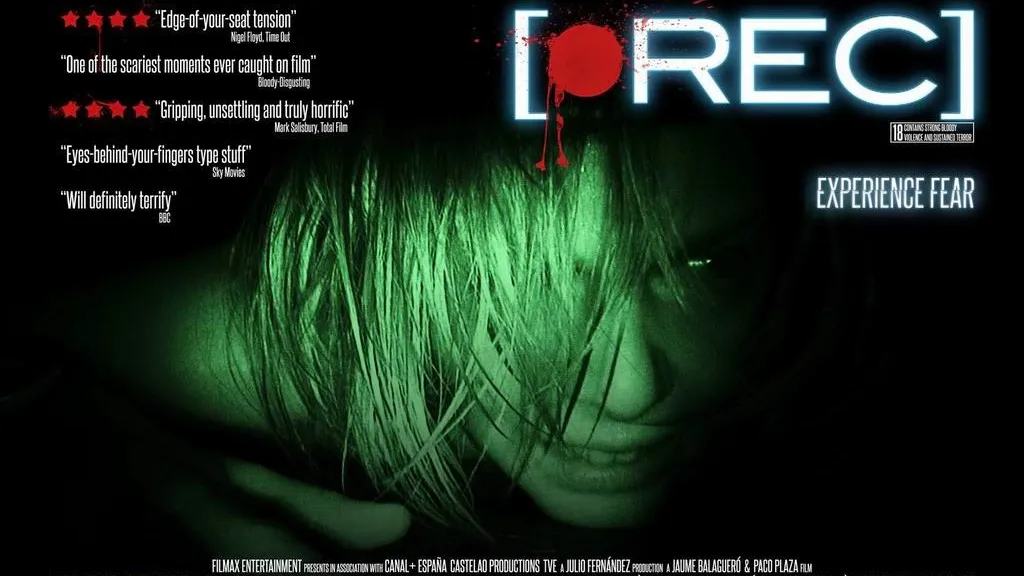REC (2007)

“REC” (2007), directed by Jaume Balagueró and Paco Plaza, is a Spanish found-footage horror film that has garnered significant acclaim for its intense and innovative approach to the genre. Here’s a comprehensive review:
Plot Summary
“REC” follows a television reporter, Ángela Vidal (Manuela Velasco), and her cameraman, Pablo (Pablo Rosso), as they cover a night shift with a local fire department. Their routine assignment quickly turns into a nightmare when they are called to a building where residents are experiencing bizarre symptoms. Upon arriving, they discover that the building has been quarantined and is overrun by a mysterious and terrifying infection. As the situation escalates, the crew and the building’s occupants become trapped, and they must fight to survive as the infection spreads.
Performances
Manuela Velasco delivers a standout performance as Ángela, capturing the blend of professionalism and vulnerability necessary for her role. The cast’s naturalistic acting style enhances the film’s realism, adding to the immersion and intensity of the experience. The performances of the supporting cast, including actors like Ferran Terraza and Jorge-Yamam Serrano, contribute to the film’s gritty and believable portrayal of a crisis situation.
Direction and Style
The direction by Jaume Balagueró and Paco Plaza is pivotal to the film’s success. “REC” employs a found-footage style that adds a raw, immediacy to the storytelling. The use of handheld cameras and real-time action creates a visceral and immersive experience, making the audience feel as though they are trapped within the building alongside the characters. The film’s pacing is tight, and the directors skillfully build tension and suspense through the confined setting and the escalating horror.![Rec] – Offscreen](https://offscreen.com/images/made/images/articles/_resized/12_10_rec_big_1000_420_90_c1.jpg)
Special Effects and Horror Elements
“REC” stands out for its effective use of practical effects and minimal CGI, which enhance the film’s authenticity and impact. The film’s horror elements are heightened by its claustrophobic setting and the unpredictability of the infection’s effects. The tension builds gradually, culminating in several genuinely frightening and intense sequences that make the most of the found-footage format.
Themes and Tone
The film explores themes of isolation, fear, and the breakdown of societal order under extreme conditions. The tone is relentless and unflinching, with a focus on maintaining a sense of realism and urgency. The confined setting of the building intensifies the sense of dread and claustrophobia, making the audience’s experience both harrowing and compelling.![Review: [REC]](https://www.fangoria.com/wp-content/uploads/2024/03/REC.jpg)
Impact and Legacy
“REC” was a critical and commercial success, earning praise for its innovative approach to the found-footage genre and its intense horror elements. It has been influential in the genre, inspiring numerous films and remakes, including the American adaptation “Quarantine” (2008). The film’s success led to several sequels that expanded on its story and mythology.
Criticisms
Some viewers might find the found-footage style disorienting or challenging to watch, as the handheld camera work can be shaky and chaotic. Additionally, while the film’s realism is a strength, it may also be a drawback for those who prefer more polished or traditional horror narratives.
Conclusion
“REC” is a standout entry in the found-footage genre, praised for its intense atmosphere, effective horror elements, and immersive storytelling. The film’s innovative approach and compelling performances make it a memorable and influential piece of horror cinema. Its ability to generate genuine fear and suspense through a realistic and confined setting has solidified its place as a modern horror classic.










